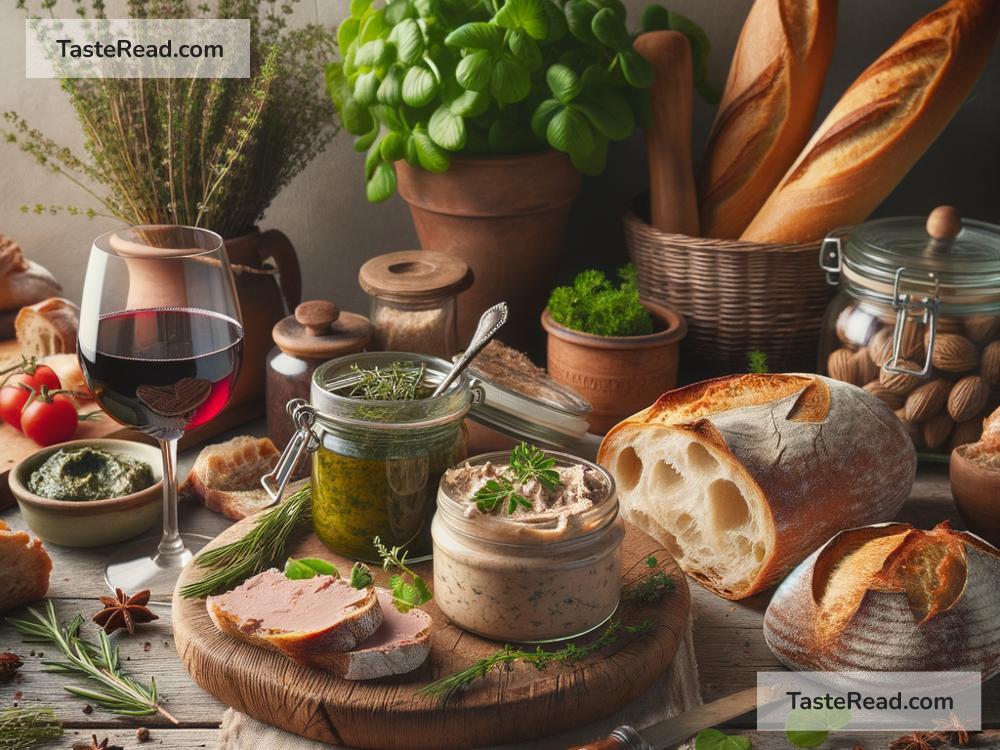Discovering Hearty, Rustic Pâté Innovations in France
France has always been a land of culinary wonders. From buttery croissants to aromatic cheeses, the French take food seriously. One treasure of their cuisine is pâté—a rich, flavorful spread made from meat, liver, or vegetables. While pâté is often seen as a fancy delight, a closer look reveals its humble and rustic roots. Many regions in France have embraced traditional recipes while also experimenting with new flavors, bringing exciting innovations to the world of pâté.
What is Pâté?
Pâté (pronounced “PAH-tay”) is a mixture of finely chopped or pureed ingredients, often cooked and then served as a spread. It might include meat, liver, seafood, veggies, spices, and herbs. While some pâté is smooth and creamy, others are chunky and rustic. It’s incredibly versatile and can be served as a starter, a snack, or even as part of a picnic.
In the past, pâté was a way to make use of small cuts of meat, organs, and other ingredients that might otherwise go to waste. French chefs and home cooks turned these ingredients into a flavorful dish that could easily be preserved. Over time, pâté has become a celebrated part of French cuisine.
The Rustic Charm of Pâté
Rustic pâté, often called pâté de campagne (“country pâté”), is a coarse and chunky version of this iconic dish. It’s typically made with pork and a blend of herbs and spices. Unlike smooth pâtés, which are often classically associated with fine dining, rustic pâté has an earthy, down-to-earth charm. Its texture, aroma, and robust flavors reflect France’s countryside traditions.
Rustic pâté is often served with crusty bread, pickles, and mustard—simple accompaniments that balance its richness. For many French families, it’s a comfort food that pairs beautifully with a glass of red wine. It’s not hard to imagine sitting in a farmhouse kitchen, enjoying a slice of pâté with a fresh baguette, laughing with loved ones.
Regional Innovations in Pâté
France is a country of diverse regions, each with its own unique culinary influences. This is especially true of pâté, which varies greatly depending on where you are. From the mountains to the seaside, local ingredients and flavors have helped shape creative versions of this classic dish. Here are a few examples of how pâté is evolving across France:
1. Southwest France: Pâté with Foie Gras
The Southwest region is famous for its foie gras (duck or goose liver), which adds a luxurious twist to rustic pâté. Combining foie gras with pork or poultry creates a rich and elegant flavor. This pairing is popular in towns like Toulouse, where it often features on festive tables.
2. Normandy: Seafood Pâtés
In Normandy, near the coast of northern France, seafood plays a major role in cooking. Innovative cooks have created pâtés using crab meat, salmon, or shrimp. These seafood pâtés are lighter yet still packed with flavor. They’re often served alongside a crisp cider, a specialty of the region.
3. Alsace: Pâté with Wine Infusions
Alsace is famous for its wine, particularly Pinot Gris and Riesling. This region’s pâtés often include a splash of local wine in the mix, infusing them with subtle fruity notes. Some recipes even include wild mushrooms to add depth to the dish, reflecting Alsace’s forested landscapes.
4. Brittany: Pâté with Buckwheat
In Brittany, culinary traditions often incorporate buckwheat, a local crop. Some rustic pâtés from this region use buckwheat flour or cooked grains as a binding ingredient. The nutty flavor of buckwheat adds an earthy twist to the dish, making it a unique experience.
5. Provence: Herb-Infused Pâtés
The region of Provence is known for its vibrant use of herbs like thyme, rosemary, and lavender. Unsurprisingly, Provençal pâtés often include these aromatic herbs, giving their recipes a Mediterranean flair. Olive oil and garlic also make frequent appearances in the mix.
Modern Pâté Trends
Beyond traditional recipes, French chefs and food artisans have started experimenting with bold new pâté styles. Vegetarian and vegan pâtés are becoming increasingly popular, featuring ingredients like lentils, mushrooms, and nuts. These plant-based options are perfect for people seeking healthier or more sustainable food choices.
Additionally, pâté makers are using spices from global cuisines, such as curry powder, ginger, or chili flakes, to create fusion flavors. These contemporary twists appeal to adventurous eaters looking for something fresh and different.
A Taste of France at Home
You don’t need to visit France to enjoy pâté. Making pâté at home can be a rewarding experience. Recipes for rustic pâté are surprisingly simple if you have the right ingredients. Start with some ground pork, chicken liver, garlic, and your favorite herbs. Mix, cook, and let it chill before serving—it’s as easy as that! Pair your homemade pâté with fresh bread, a few pickles, and perhaps a small glass of wine.
Or, if cooking isn’t your style, visit a local deli or specialty store to sample French-style pâtés. Many shops carry imported pâtés made with traditional recipes, so you can experience authentic flavors.
Conclusion
Discovering the world of hearty, rustic pâté is like taking a culinary journey through France. From countryside kitchens to modern urban restaurants, pâté embodies the nation’s love for delicious, innovative food. Whether you enjoy it traditionally with pork or try a plant-based twist, one thing is clear: pâté is here to stay, bringing the spirit of French cuisine to tables worldwide. So next time you’re looking for something special to eat, why not give rustic pâté a try? It’s a taste of France you’ll never forget.


